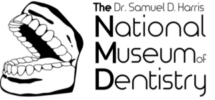
The Tooth Fairy is a unique American legend. Unlike other fairies in American culture, the Tooth Fairy does not come directly from another singular myth or culture. Although the physical depiction relies heavily upon fairies found in cultures around the world, the Tooth Fairy’s deamenor and actions draw from a myriad of tooth-related legendary creatures and figures.
While there are similar creatures, like the Tooth Mouse, the Tooth Fairy is not bound to the promise of the new tooth being stronger. Despite the similar routine of replacing a tooth from under a pillow with money, the origin of the Tooth Fairy was a culmination of multiple cultural references.
TOOTH FAIRY LOOK-ALIKES
Folklore similar to the legend of the Tooth Fairy has existed long before the American fairy came to be. Most similar to the Tooth Fairy is the previously described European Tooth Mouse. Another Tooth Fairy related legend comes from Lancashire, England. In Lancashire, parents use the threat of the evil water witch Jenny Greenteeth to encourage children to brush their teeth. Now across the world, the Tooth Fairy is evoked to ensure proper hygiene. A second tooth-related witch that is more related to the Tooth Fairy is the Venetian Christmas witch Marantega who leaves coins for teeth.

Despite all of these preceding legends with similar functions, none seem to resemble the Tooth Fairy as much as Saint Apollonia. Saint Apollonia is the patron saint of dentists who is depicted with pincers holding a tooth and palm fronds. In some depictions of Saint Apollonia the palm frond is even positioned in a way that resembles fairy wings. With America’s merging of cultures, it is easy to see how different legends can be combined to create a new one.

INVENTION OF THE TOOTH FAIRY
Although related legends date back to at least the 17th century, the Tooth Fairy is a fairly recent American invention first appearing in the early 1900’s. At first, in the years prior to World War II, American children were participating in the pillow ritual and offering their teeth to unspecified fairies. It was not until 1949 that a specific Tooth Fairy was mentioned in popular culture. Historians speculate that as many family’s wealth improved in the postwar era it became more affordable to give money for a lost tooth.

Then, in the 1980’s when the Tooth Fairy had gained more traction as a national icon, the belief that more money was given for better teeth arose. Fast forward to the present day, the accessibility of the internet has spread the Tooth Fairy’s magic all over the world.
For many children, the experience of a Tooth Fairy visit is magical. Any physical and mental discomfort experienced by losing a tooth is offset by the belief that it will be exchanged for or transformed into money. In fact, this helps so much that many people who believed in the Tooth Fairy as a child plan to continue it with their children, according to survey conducted by Rosemary Wells. Beginning as simply an unspecified tooth-taking fairy based in the United States, the Tooth Fairy has grown into a household name and international icon.
Tooth Fairy Poster, Photographed by Robert Brody for the Interstate Drug Exchange, Inc.






